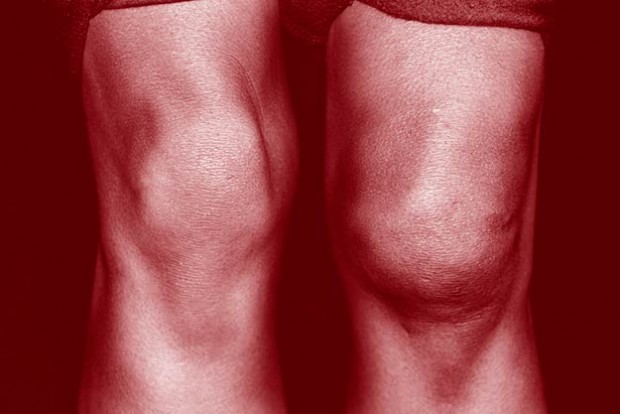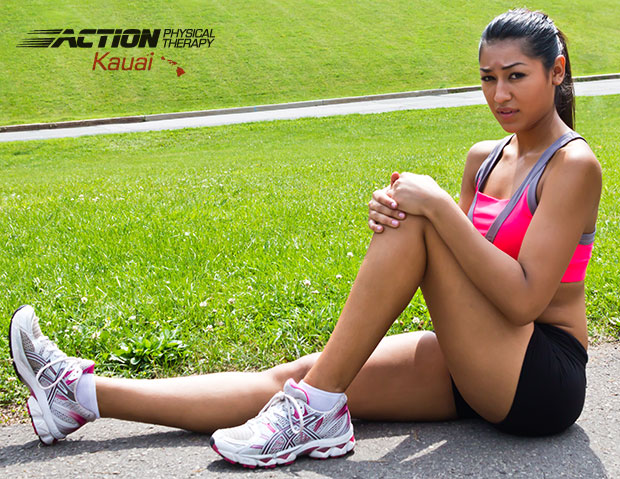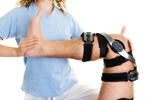Kauai Physical Therapy Blog
Home of Action Physical Therapy: Kauai's Premier Physical Therapy and Personal Fitness Clinic
Knee
MMA Training Tradition Comes Under Scrutiny With Injured Champ
Old School Vs. New Class
 In a press conference this morning, the often outspoken UFC President Dana White scrutinized training techniques that he asserts led to a champ’s career-threatening MCL tear. White charges that American Kickboxing Academy (AKA)— training facility of current UFC Heavy Weight Champion Cain Velasquez—is “still in the stone ages” when it comes to their fight prep regimen.
In a press conference this morning, the often outspoken UFC President Dana White scrutinized training techniques that he asserts led to a champ’s career-threatening MCL tear. White charges that American Kickboxing Academy (AKA)— training facility of current UFC Heavy Weight Champion Cain Velasquez—is “still in the stone ages” when it comes to their fight prep regimen.
Cain Velasquez has a string of injuries that have kept him out of title bouts with eager challengers. He last fought in 2013, when he dethroned former heavy weight champ Junior dos Santos at UFC 166, but has since been sidelined by training-induced shoulder and knee injuries.
White has become so frustrated by injuries sustained in training (and the events that don’t happen because of them) he announced that UFC’s new headquarters in Las Vegas will include a “huge facility for rehab and therapy” that will focus on “educating the fighters on training better.”
It’s important to note that Velasquez, whose professional record is 14 and 1 (his latest win in the form of a championship belt), is obviously doing something right. In fact, AKA is home to number of top MMA contenders. And, while other fighters, trainers, and sideline commentators will surely contest White’s words, he does bring to light the importance of aligning injury prevention and fight preparation.
The details of UFC’s new HQ have yet to be divulged and the initial announcement leaves much to the imagination. But, it will be interesting to see if White’s vision for a bigger, better training compound will reduce injuries and still produce champions. In the meantime, we hope Cain Velasquez recovers well and look forward to seeing him back in action again soon.
If you’d like to include injury prevention in your training program, or need therapy from an injury that’s already happened, we’re here to help. Some of our own patients are making a living in the octagon, so we have an intimate understanding of what kinds of injuries occur and how to help them heal.
Physical Therapy Comes Home
New Study Shows In-home PT Just as Effective as In-patient
 For knee replacement patients itching to get back home quickly, new research is providing a great prognosis: people who choose at-home physical therapy instead of in-patient rehabilitation after knee replacement surgery do just as well when it comes to complications, long-term pain management and movement recovery.
For knee replacement patients itching to get back home quickly, new research is providing a great prognosis: people who choose at-home physical therapy instead of in-patient rehabilitation after knee replacement surgery do just as well when it comes to complications, long-term pain management and movement recovery.
The study was inspired by a growing number of knee surgery patients being sent directly home from the hospital, instead of to a rehab center—a trend being partly driven by the growing hesitation of insurance companies and Medicare to cover the cost of in-patient rehab.
Of the 2,400-knee replacement patients studied, there was no difference observed between the in-patient and at-home groups at the six-month post-surgery mark in terms of infection risk, knee stiffness or other complications. Nor were differences observed after two years in terms of progress made, pain experienced or ability to move. Moreover, a previous study in 2008 revealed a nearly 30 percent drop in medical costs between at-home and in-patient rehabilitation care.
This isn’t to say that a patient should automatically be sent home for rehab. His or her strength, frailty, and overall medical condition (among other factors) may require in-patient care. While this research is an eye opening first step in the merits of in-home rehabilitation, it will take more time to understand which patients will benefit most from care at home or in hospital facilities.
Read more about this study and our Home Exercise Program services.
ACL Injury Prevention: Crucial New Research Could Keep More Players in the Game
It’s an agonizing, yet all too common scene on Monday Night (or Monday afternoon, if you live in Hawaii): a wide receiver, crumpled on the turf, clutching his knee, writhing in pain. Injury to the ACL, or Anterior Cruciate Ligament, is one of the most common sidelining injuries for professional football players.
 According to a recent article in Medscape, the main reason is not high-impact collisions as many originally thought, but something far less conspicuous – body position. “Players in the NFL are tearing their ACLs with movements that were identified as risk factors in female soccer and basketball players in the 1990s”, said Bert Mandelbaum, MD, an orthopedic sports doctor who helped design an injury-prevention program for the Fédération Internationale de Football Association (FIFA).
According to a recent article in Medscape, the main reason is not high-impact collisions as many originally thought, but something far less conspicuous – body position. “Players in the NFL are tearing their ACLs with movements that were identified as risk factors in female soccer and basketball players in the 1990s”, said Bert Mandelbaum, MD, an orthopedic sports doctor who helped design an injury-prevention program for the Fédération Internationale de Football Association (FIFA).
Dr. Mandelbaum and his colleagues analyzed 27 ACL injuries that occurred during the 2013/14 NFL season, and found that two-thirds happened without contact between players. The players were mostly near the line of scrimmage and were injured while planting or cutting to change direction. Much like the injuries he saw in soccer in basketball players, a combination of valgus leg position (when the knee bows inward) and muscle exertion was the primary culprit.
While it’s still early in the research process, we’re excited to see what comes of this study, and if NFL teams will adjust their injury prevention techniques. Early support is already growing. Matthew Matava, MD, team physician for the St. Louis Rams and past president of the NFL Physicians Society, has signed on to help with the study.
For Meniscus Tear, Exercise Therapy Outperforms Surgery
For Patients With Meniscus Tear, Exercise Therapy Outperforms Surgery in Key Muscle Strength Measure
 In a study that turned the tables on common research that uses exercise therapy evaluate the effectiveness of arthroscopic surgery, used a surgery group as a control to measure improvements in quadriceps strength and neuromuscular function. They write that such improvements, “can provide functional improvements, pain relief, and possibly also a delay in the onset of osteoarthritis (OA)” in individuals with the tears.
In a study that turned the tables on common research that uses exercise therapy evaluate the effectiveness of arthroscopic surgery, used a surgery group as a control to measure improvements in quadriceps strength and neuromuscular function. They write that such improvements, “can provide functional improvements, pain relief, and possibly also a delay in the onset of osteoarthritis (OA)” in individuals with the tears.
Exercise therapy can improve certain functions to a degree not possible through arthroscopic surgery for middle-aged patients with degenerative meniscus tears, according to a new study from Denmark. Researchers believe the improvement in function through exercise—more than 16% greater than improvement experienced by the surgery group—may lead to better long-term outcomes.
To read more on this subject, click here.
Walking 6,000 steps a day might protect adults at risk of knee osteoarthritis
 Walking 6,000 steps or more each day might protect adults at risk of knee osteoarthritis from developing mobility issues, such as difficulty getting up from a chair and climbing stairs, according to a new study.
Walking 6,000 steps or more each day might protect adults at risk of knee osteoarthritis from developing mobility issues, such as difficulty getting up from a chair and climbing stairs, according to a new study.
Even though walking is a common daily activity for older adults, research has found two-thirds of adults with arthritis walk less than 90 minutes per week.
“Walking is an inexpensive activity and despite the common popular goal of walking 10,000 steps per day, our study finds only 6,000 steps are necessary to realize benefits,” White said in the release. “We encourage those with or at risk of knee OA to walk at least 3,000 or more steps each day and ultimately progress to 6,000 steps daily to minimize the risk of developing difficulty with mobility.”
To read more and see the study click here.
ACL Knee Injury Rehabilitation
Rehab a Injured Anterior Cruciate Ligament
 A torn ACL is an injury or tear to the anterior cruciate ligament (ACL). The ACL is one of the four main stabilising ligaments of the knee. The ACL attaches to the knee end of the Femur (thigh bone), at the back of the joint and passes down through the knee joint to the front of the flat upper surface of the Tibia (shin bone).
A torn ACL is an injury or tear to the anterior cruciate ligament (ACL). The ACL is one of the four main stabilising ligaments of the knee. The ACL attaches to the knee end of the Femur (thigh bone), at the back of the joint and passes down through the knee joint to the front of the flat upper surface of the Tibia (shin bone).
What should you do if you have injured your ACL?
- Immediately stop play or competition
- Apply RICE (Rest, Ice, Compression, Elevation) to the knee immediately
- Seek medical attention as soon as possible.
Your physician will diagnose any additional injuries, and you may be sent for an MRI scan or X-ray. You may be refered for ACL Surgery if required. Your physician will provide a pre-surgery rehabilitation program to strengthen the knee and reduce the swelling in preparation for surgery. This will help produce the best results following surgery.
The steps to proper rehabilitation will vary from case to case. The following is provided only as a reference and not a substitute for a physician’s diagnosis.
Immediately following surgery
- For approximately 2 weeks the initial protocol will be largely rest and use of crutches
- Ice and compression as before to reduce post-operative swelling
- Mobility exercises to regain full range of motion
- Hamstring stretching
- Strengthening exercises such as: quadriceps contractions, hamstring contractions and calf raises.
Two weeks following surgery
- Increase walking and aim for normal gait
- Continue mobility and strengthening exercises
- Progress hamstring curl exercises to using tubing or a resistance machine
- Introduce half squats and shallow lunges
- Start hip flexor strengthening and adduction and abduction exercises
- Balance and proprioception drills
- Continue icing after activity if swelling persists
Six weeks following surgery
- Progress to full lunges and squats, add weight for extra resistance
- Increase resistance/reps for strengthening exercises
- Single leg press or half squats
- Start straight line jogging
Twelve weeks following surgery
- Use a mix of training activities such as running, cycling, swimming to build aerobic fitness
- Gradually increase speed and duration of running
- Introduce running drills incorporating sideways and backwards running, change of direction and cutting maneuvers
- Jump and land drills
- Sports specific drills (e.g. football/hockey dribbling/passing)
- Continue with flexibility and strengthening exercises as before
often the patient will be given an exercise regime to continue even after being released from physical therapy and given the green light to return to normal activity.
For more information call the rehabilitation experts at Action Physical Therapy at 808-246-0144.
For more info, please visit the Sports Injury Clinic online.


